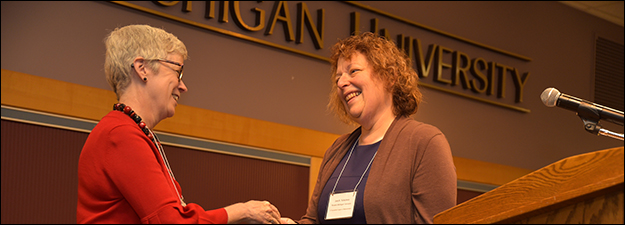Cross-Cultural Images and Crafts: Transcultural Objects and Artisanal Migration
Sponsoring Organization(s)
Medieval Academy of America
Organizer Name
Leor Halevi, Sara Lipton
Organizer Affiliation
Vanderbilt Univ., Stony Brook Univ.
Presider Name
Leor Halevi
Paper Title 1
Mediterranean Stylistic Influences in the Book of Durrow and the Book of Kells: Mimesis and Metamorphosis in Irish Manuscript Illumination, 700-1000 CE
Presenter 1 Name
Laura McCloskey
Presenter 1 Affiliation
Trinity College Dublin, Univ. of Dublin
Paper Title 2
Christian/Jewish Interaction in Parisian Luxury Workshops of the Thirteenth Century
Presenter 2 Name
Sharon Farmer
Presenter 2 Affiliation
Univ. of California-Santa Barbara
Paper Title 3
Cross-Cultural Animal Fables: Comparative Iconography in Three Kalila wa Dimna Manuscripts
Presenter 3 Name
Anna D. Russakoff
Presenter 3 Affiliation
American Univ. of Paris
Start Date
12-5-2017 1:30 PM
Session Location
Bernhard Brown & Gold Room
Description
Globalization is stimulating medievalists to examine the mobility of things and persons across cultures in the distant past. While contributing to this emerging field, the purpose of our linked pair of panels is to concentrate, from very different perspectives, on religious boundaries and cross-cultural exchange in the first half of the second millennium. Special attention will be paid to the consequences of cross-cultural trade. What were the economic, social, cultural, legal, or artistic effects of the movement of merchants, artisans, and others? This panel will deal with material objects and their makers; it is linked to a second panel that will deal with legal and doctrinal matters relating to interfaith commerce.
Sara Lipton
Cross-Cultural Images and Crafts: Transcultural Objects and Artisanal Migration
Bernhard Brown & Gold Room
Globalization is stimulating medievalists to examine the mobility of things and persons across cultures in the distant past. While contributing to this emerging field, the purpose of our linked pair of panels is to concentrate, from very different perspectives, on religious boundaries and cross-cultural exchange in the first half of the second millennium. Special attention will be paid to the consequences of cross-cultural trade. What were the economic, social, cultural, legal, or artistic effects of the movement of merchants, artisans, and others? This panel will deal with material objects and their makers; it is linked to a second panel that will deal with legal and doctrinal matters relating to interfaith commerce.
Sara Lipton

